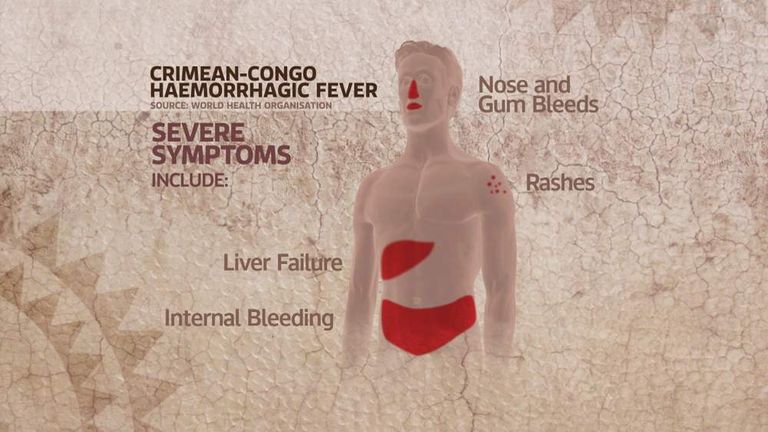Congo Fever: Two Airline Passengers Monitored
Two people in the UK who came into contact with a man suffering from a potentially deadly viral disease are being monitored.
Saturday 6 October 2012 06:20, UK
Health experts treating a man with a potentially deadly viral disease are monitoring two people who they say sat near him on a plane.
The 38-year-old patient remains in a critical condition after contracting Crimean-Congo haemorrhagic fever (CCHF) - a tick-borne condition which is fatal in around a third of cases.
It is the first recorded case of the disease in the UK, according to the .
The man was diagnosed with the infectious disease when he flew into Glasgow on Tuesday from a Dubai stopover. His journey originated in the Afghan capital, Kabul.
Concerns have been raised for people who were sitting close to him on the journey.
said it has identified and contacted four passengers who may have had contact with the patient.
The health board said two of those - one who remained in "close proximity" to the ill man during the flight - will be monitored on a daily basis for the next two weeks for any developments of relative symptoms.
The other two passengers do not require follow-up surveillance and the risk to all other passengers on the flight from Dubai is "extremely low", it added.
In a statement, the board said: "In total, therefore, we are currently following up two passengers from the flight with daily monitoring as a precaution for two weeks - two weeks is the maximum incubation period for the disease."
The ill man was being treated in isolation at Gartnavel General Hospital's Brownlee Centre, which specialises in infectious disease.
But, on Friday, he was flown from Scotland to a high-security infectious diseases unit at London's Royal Free Hospital with the support of the Scottish Ambulance Service and the RAF.
The hospital houses the national specialist centre for the management of patients with hazardous infections.
Dr Syed Ahmed, NHS Greater Glasgow and Clyde's consultant in public health who is co-ordinating investigations into the case, said: "The risk of person-to-person transmission of Crimean-Congo viral haemorrhagic fever is extremely low as it can only be transmitted by direct contact with infected blood or body fluids.
"It is not a virus which is transmitted through the air. As such, the risk to those who were in close contact with him is minimal. We have already made contact with all the patient's close contacts and they are being followed up appropriately."
The virus is widespread in parts of Africa, Asia, India and the Middle East.
Outbreaks can usually be traced to a person having had contact with blood or body fluids from infected animals or people.
It causes large areas of severe bruising, nosebleeds and uncontrolled bleeding at injection sites.
Early symptoms include headaches, fever, vomiting and back, joint and stomach pain. They can also include red eyes, red spots on the roof of the mouth and jaundice.
:: Anyone who is worried they may have the disease should contact NHS24 for advice on 08000 858531.



